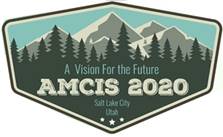Loading...
Paper Type
Complete
Abstract
Regulators and banks have identified the necessity of a more holistic and harmonized approach for financial regulatory reporting than the current approach of "just" adopting new regulations to decrease the reporting burden on banking industry. Thus, new platform-based reporting frameworks for supervisory and statistical reporting of banks are being discussed to foster more efficient processing and reporting of data in Europe. Toward this goal, we use the e3-value method to model the ecosystem of emerging financial regulatory reporting frameworks based on publicly available laws, legal documents, guidelines published, consultations and industry surveys by supervisory authorities. Extending Ghazawneh & Henfridsson (2013) conceptualizations of boundary resources, the paper reveals that the boundary resources for financial regulatory reporting platforms will have to be co-created with the emerging regulatory reporting framework itself as foundation for the boundary resources and the regulated entity (i.e. banks) as they require the control about their sensitive data.
Recommended Citation
Floetgen, Rob Jago; Gomm, Sebastian; Böhm, Markus; and Krcmar, Helmut, "Implications of Emerging Financial Regulatory Reporting Frameworks for Digital Platforms Boundary Resources" (2020). AMCIS 2020 Proceedings. 2.
https://aisel.aisnet.org/amcis2020/accounting_info_systems/accounting_info_systems/2
Implications of Emerging Financial Regulatory Reporting Frameworks for Digital Platforms Boundary Resources
Regulators and banks have identified the necessity of a more holistic and harmonized approach for financial regulatory reporting than the current approach of "just" adopting new regulations to decrease the reporting burden on banking industry. Thus, new platform-based reporting frameworks for supervisory and statistical reporting of banks are being discussed to foster more efficient processing and reporting of data in Europe. Toward this goal, we use the e3-value method to model the ecosystem of emerging financial regulatory reporting frameworks based on publicly available laws, legal documents, guidelines published, consultations and industry surveys by supervisory authorities. Extending Ghazawneh & Henfridsson (2013) conceptualizations of boundary resources, the paper reveals that the boundary resources for financial regulatory reporting platforms will have to be co-created with the emerging regulatory reporting framework itself as foundation for the boundary resources and the regulated entity (i.e. banks) as they require the control about their sensitive data.
When commenting on articles, please be friendly, welcoming, respectful and abide by the AIS eLibrary Discussion Thread Code of Conduct posted here.


